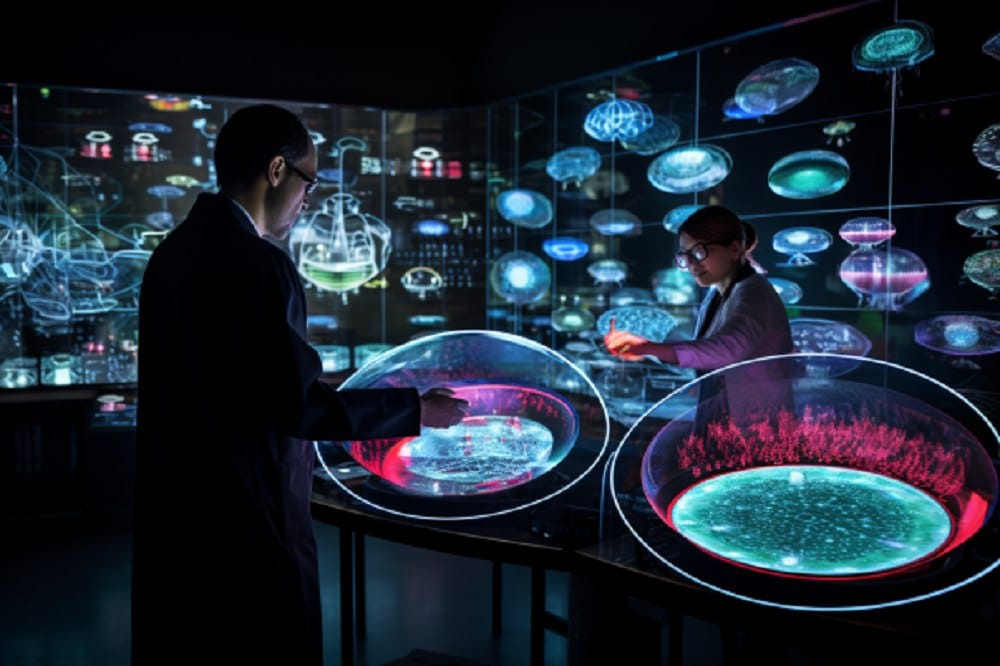Synthetic Mouse Embryos
Israeli scientists at the Weizmann Institute of Science in Rehovot have achieved a groundbreaking milestone. They successfully developed synthetic embryo models of mice entirely from stem cells grown in a petri dish, eliminating the need for fertilized eggs.
This remarkable method offers new insights into how stem cells shape into various organs during embryo development and holds the promise of growing tissues and organs for transplantation.
Pioneering Research Techniques
Professor Jacob Hanna, the lead researcher, explained the embryo’s potential as an unparalleled organ creator and 3D bioprinter. While scientists have excelled in reprogramming mature cells back to a stem-like state, differentiating stem cells into specialized body cells to form complete organs has been a significant challenge.
However, Hanna’s team overcame these hurdles by unleashing the self-organization potential innate in the stem cells. Building on prior advancements, the team leveraged two key innovations.
First, they devised an efficient method to revert stem cells to their earliest, most versatile state. Then, they developed an electronic device for growing natural mouse embryos outside the womb, closely mimicking natural nutrient supply and oxygen exchange.
The Birth of Synthetic Embryos
The study’s breakthrough lies in creating a synthetic embryo model exclusively from cultured naïve mouse stem cells, bypassing the need for a fertilized egg. This approach holds immense value, sidestepping technical and ethical dilemmas associated with using natural embryos in research and biotechnology.
Even in the context of mice, specific experiments are rendered implausible due to the vast quantity of embryos required. Conversely, models derived from laboratory-cultivated mouse embryonic cells, cultivable in the millions, offer virtually limitless access and possibilities.
Before introducing the stem cells into their device, the researchers took a strategic approach by segregating them into three groups. While one group was left unaltered, the other two underwent a 48-hour pretreatment, triggering the overexpression of specific genes responsible for placental or yolk sac development.
This meticulous approach led to the formation of aggregates from a minuscule fraction of cells, approximately 0.5% (50 out of around 10,000). These aggregates subsequently evolved into elongated, embryo-like structures.
Notably, each group of cells had been distinctly labeled with different colors, enabling the scientists to monitor the formation of placenta and yolk sacs outside the embryos, with the model’s development unfolding similar to a natural embryo.
These synthetic models closely resemble their natural counterparts, following the trajectory of normal development until day 8.5 – a milestone that marks nearly half of the mouse’s 20-day gestation period. By this stage, the synthetic models boasted fully functional organs, including a beating heart, a circulatory system for blood stem cells, a well-structured brain with folds, a neural tube, and an intestinal tract.
Comparative analysis with natural mouse embryos indicated a 95% similarity in different cell types’ internal structure and gene expression patterns. More importantly, the organs within these synthetic models displayed every indication of functionality.
Implications And Future Possibilities
This study is an exciting new challenge for Professor Hanna and the broader community of stem cell and embryonic development researchers. Their next move lies in unraveling the intricate mechanisms stem cells inherently discern their roles, self-assemble into organs, and navigate to their designated locations within an embryo.
The unique transparency of their synthetic system holds immense potential to boost the understanding of birth and implantation defects in human embryos, providing invaluable insights into these critical stages of development. Beyond reducing animal usage in research, synthetic embryo models hold the potential to become a dependable source of cells, tissues, and organs for transplantation.
Rather than developing separate protocols for growing specific cell types, a synthetic embryo-like model could be created to isolate needed cells. This approach allows emerging organs to develop naturally, harnessing the embryo’s inherent ability.
The good news is that groundbreaking achievement paves the way for a future where synthetic embryos may revolutionize organ transplantation and advance our understanding of embryonic development.

